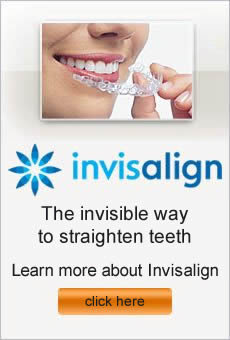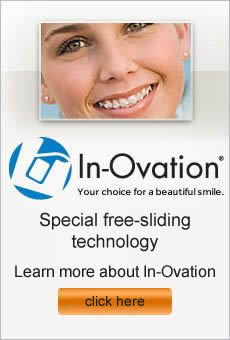If you wear braces, you already know that keeping them clean can be tricky. The brackets, wires, rubber bands, and other appliances accumulate food debris and plaque buildup. If not cleaned properly, your teeth may become stained and begin to decay. That’s why it’s so important to focus on good oral care while wearing braces. Here are some tips about how to maintain a sparkling clean mouth at the same time you are straightening your smile.
Strive to brush your teeth after every meal or snack. It’s sometimes not possible, but make this your goal. Use fluoride toothpaste and spend enough time to get your braces clean. Try these techniques:
- Use a soft toothbrush to brush down from the top and then up from the bottom on every tooth.
- Then switch to a proxabrush, which is designed for cleaning between braces. It is shaped like a tiny Christmas tree. Insert the brush down from the top of the braces between each tooth, and then up from the bottom as well. Do this several times in each direction before going to the next space between your braces.
- Floss by feeding one end of the floss through the space between the arch wire and the top of the tooth near your gum. Gently floss on each side of the teeth, but don’t use too much force around the wires. Also, ask your orthodontist about floss threaders to help you insert the floss into your braces.
- Consider using a fluoride mouthwash to access areas your toothbrush misses.
- Don’t forget to clean your retainer if you have one. Brush it at the same time you brush your teeth, and disinfect it once a week by soaking it in a denture cleanser.
While wearing braces, be sure to follow your orthodontist’s instructions about safe foods to eat. Some foods should be avoided such as chewy foods like caramel, corn on the cob, foods hard to bite into like bagels, and hard items like popcorn and nuts. Also, do not chew bubble gum or ice. Foods like these can break or loosen your braces.
Dr. Fotovat is an Orthodontist in Sherman Oaks CA offering braces.
Do you wake up feeling just as tired as when you went to sleep? If so, you are not alone. Approximately 12 to 20 million Americans suffer from some degree of sleep apnea, a serious health condition that impacts your overall well being. Snoring is often a symptom of this problem, but many people don’t take that sign seriously enough.
What is sleep apnea?
Characterized by frequent lapses in breathing throughout the night that last for 10-20 seconds each time, sleep apnea occurs in two forms, obstructive sleep apnea (OSA) or central sleep apnea. Obstructive sleep apnea (OSA) is caused by airway blockage. With OSA, the soft tissues in your throat relax too much and collapse, which cuts off your air supply. Central sleep apnea happens when the brain forgets to send the right signals to the muscles that control breathing.
What are the symptoms of sleep apnea?
Signs of OSA may include loud snoring, headaches, confusion, mood swings, difficulty concentrating, and decreased energy.
Can sleep apnea impact my daily life?
Not only will you feel exhausted, but sleep apnea can affect your ability to function. Often, people with sleep apnea experience daytime grogginess, irritability, and memory issues. As well, sleep apnea can increase your risk for certain medical conditions such as weight gain, gastroesophageal reflux disease, and heart-related problems like hypertension.
What treatment is available?
After you undergo a thorough evaluation to confirm sleep apnea, your doctor can recommend therapy to address the problem. The most common treatment is a continuous positive airway pressure (CPAP) machine, which regulates breathing while you sleep. Many individuals don’t respond well to CPAP machines, finding them bulky or uncomfortable. As an alternative, your orthodontist can fit you for a night guard, an oral appliance that keeps your airways open during sleep.
In most cases, you have probably either had braces, need braces, or know someone with braces. When you need orthodontic treatment, you often receive a great deal of information. Having a basic knowledge about the world of orthodontics will help you make educated decisions for yourself or a loved one.
What is orthodontics?
Simply put, orthodontics is the dental specialty focused on the diagnosis, prevention, and treatment of dental or facial irregularities.
How is an orthodontist different from a dentist?
While all orthodontists are dentists, not all dentists are orthodontists. In addition to successfully completing dental school, orthodontists must also take another two to three years of advanced training.
Can I tell if braces are needed?
The best way to determine if you or a family member should seek orthodontic treatment is through an evaluation with an orthodontist. If you notice buck teeth, an overbite, under bite, or open bite, orthodontic treatment is a likely course of action.
What’s the difference between Phase I and Phase II?
With Phase I, or early interceptive treatment, patients are between 6 and 10 years old, and all their permanent teeth have not yet erupted. Certain problems are easier to treat when children are younger and they are still growing. Also called comprehensive treatment, Phase II happens once all permanent teeth come in and usually involves a full set of braces.
What are my treatment options?
That answer depends on your age and your specific case. Typically, younger children respond well to traditional metal braces. Older teens and adult patients often like less conspicuous choices. Ceramic brackets, clear aligners like Invisalign, and lingual braces can straighten your smile and allow you to maintain a professional image.
Find an Orthodontist in Sherman Oaks CA
For many people, enjoying the warm weather involves touch football, bike riding, or other summer activities. While it’s great to have a good time, you need to preserve your smile as you participate in the fun. Approximately 40 percent of all sports injuries involve the face. Wearing a mouth guard can ensure that you don’t hurt your teeth and gums if an accident occurs. In fact, a mouth guard can reduce the risk of concussion by 50 percent.
Who needs a mouth guard?
Anyone who is involved in sports that could result in contact should purchase a mouth guard, including soccer, hockey, football, and basketball. Even non-contact activities such as skateboarding, horseback riding, and mountain biking could result in injury to your face or mouth, so you may want to consider a mouth guard as well.
Can adults wear mouth guards?
Absolutely. Whether you play on the community softball team or just like to throw the football with the neighbors, you are never too old to protect your smile.
What are the options for a mouth guard?
If you decide to look into getting a mouth guard, you have several choices. Inexpensive and available at any sporting goods store, pre-made mouth guards can be bulky and may not fit correctly. Boil-and-bite mouth guards are designed to conform to your teeth after you place them in scalding, hot water. Most dentists and orthodontists recommend custom mouth guards, which are created from molds of your mouth. Custom mouth guards offer the best protection.
Can I wear a mouth guard with braces?
Yes. During orthodontic treatment, you still need to worry about your mouth if you play sports. Because of the braces, you will need to wear a non-fitted mouth guard so that the appliance doesn’t damage your orthodontia.
Mouth guard for braces – Orthodontist in Sherman Oaks CA
Obesity, defined as an excess proportion of body fat, has reached epidemic levels in the United States. This condition presents health risks to many areas of your body, and takes a toll on just about every aspect of your life. What does obesity have to do with oral health? Recent studies have linked the development of obesity with oral bacteria.
By testing the saliva of overweight people compared to individuals within a healthy weight range, researchers have discovered an oral bacteria present in 98 percent of the obese subjects. Experts believe this bacteria is an indicator of developing an overweight condition. Also, they suspect that the bacteria may participate in the body functions that lead to obesity.
Preventing and controlling obesity usually begins with analyzing and changing your diet. A high glycemic diet, which generally means a diet high in sugars, contributes to weight gain. It is also connected with your dental health, because sugars in your mouth are converted into plaque. If plaque accumulates on your teeth and gums, the risk increases for tooth decay and gum disease.
While it will likely benefit your waistline to reduce the amount of sugar consumed, doing so will reduce your risks for oral disease. Likewise, regular dental checkups, proper oral hygiene including brushing and flossing twice daily, and smart diet modifications will also lower your oral health risks. As experts continue to investigate the connection between your mouth and your overall health, following recommendations for caring for your mouth will likely decrease oral bacteria and possibly limit your risks of other health concerns such as obesity.
Dr. Fotovat is an Orthodontist in Sherman Oaks CA



